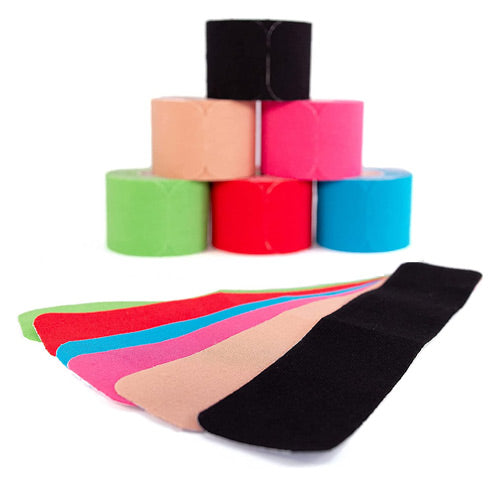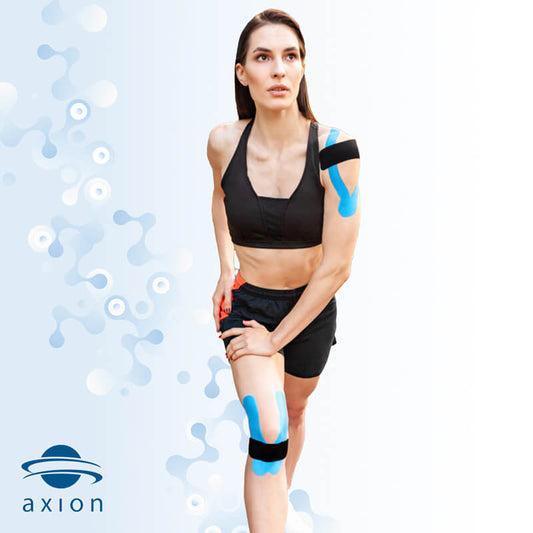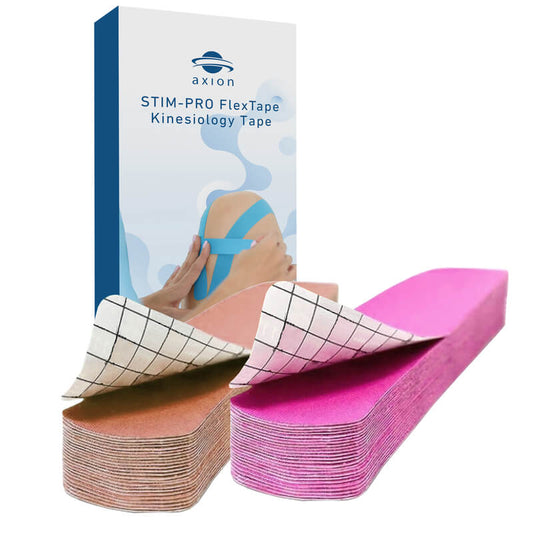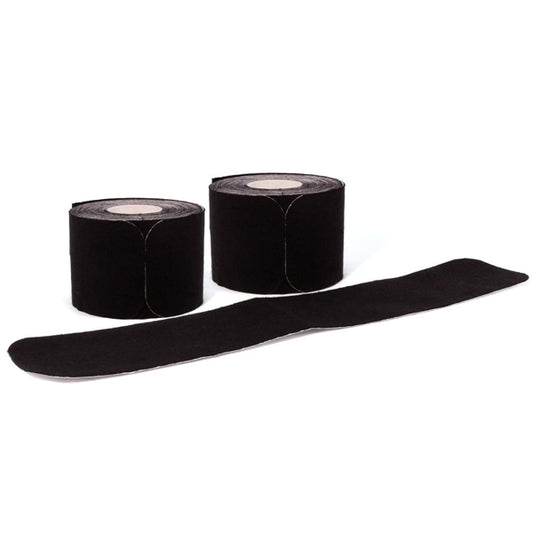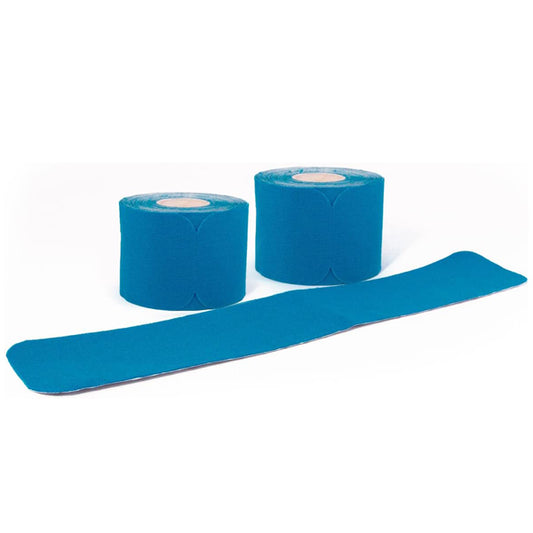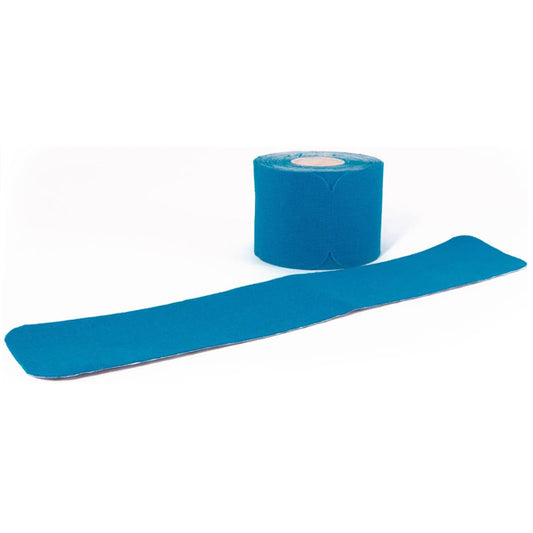-
Kinesiology Tape - Set of 6 - Uncut
Regular price €21,95Regular priceUnit price €0,73 per m -
2 rolls Kinesiology Tape 500x5 cm uncut by axion
Regular price €9,95Regular priceUnit price per€0,00Sale price €9,95 -
Set of 12 mixed kinesiology tape 5cm uncut by axion
Regular price €30,95Regular priceUnit price per -
Set of 3 Kinesiology Tape 5cm Uncut by axion
Regular price €11,95Regular priceUnit price per -
Set of 6 mixed kinesiology tape 5cm pre-cut from axion
Regular price €19,95Regular priceUnit price per -
50 pre-cut strips kinesiology tape 25x5cm by axion
Regular price €9,95Regular priceUnit price per€0,00Sale price €9,95 -
Set of 12 mixed kinesiology tape 5cm pre-cut by axion
Regular price €31,95Regular priceUnit price per€0,00Sale price €31,95 -
Set of 3 Kinesiology Tape 5cm Pre-Cut by axion
Regular price €9,95Regular priceUnit price per€0,00Sale price €9,95 -
40 Streifen Kinesiologie-Tape 5cm breit 25cm lang Precut auf 2 Rollen von axion
Regular price €8,95Regular priceUnit price per -
20 strips of kinesiology tape 5cm wide 25cm long Precut on a roll from axion
Regular price €5,95Regular priceUnit price per€0,00Sale price €5,95
What are kinesiology tapes?
In recent years at the latest, the colorful tapes on many top athletes or your physiotherapist have certainly caught your eye. Due to the many, mostly bright colors, they immediately catch the eye as a kind of bandage for most body regions. But in contrast to rigid sports tape, kinesiology tapes are very elastic and have a wavy adhesive layer.
The tapes are suitable for almost all parts of the body and are mainly used to support training and prevention [1].
How does kinesiology tape work?
Due to the material properties with 140 to 160 percent elasticity , the kinesiology tape is based on the elasticity of human skin . It is said to provide stability to your joints, muscles and ligaments and allow mobility even in the event of injury or inflammation.
Because the tape is applied in a taut state, it supports movement and reduces the force that must be applied to muscles, joints and ligaments . For example, imagine the application on the shoulder. If our arms hang straight down, then the skin is tightest. In this state, the tape is applied. If you now raise your arms, the skin (and also the kinesiology tape) will contract. By contracting the tape, the force to be applied is reduced.
Due to the material properties with 130 to 140 percent elasticity , the kinesiology tape is based on the elasticity of human skin . It is said to provide stability to your joints, muscles and ligaments and allow mobility even in the event of injury or inflammation.
Because the tape is applied in a taut state, it supports movement and reduces the force that must be applied to muscles, joints and ligaments . For example, imagine the application on the shoulder. If our arms hang straight down, then the skin is tightest. In this state, the tape is applied. If you now raise your arms, the skin (and also the kinesiology tape) will contract. By contracting the tape, the force to be applied is reduced.
In general, two modes of action can be distinguished:
-
Supporting function for the movement of your joints, ligaments and muscles
As in the example with the shoulder described above, the kinesiology tape offers you relief for the damaged muscles, ligaments and joints and allows more freedom of movement despite the injury. Professional athletes often use this advantage to remain efficient despite minor injuries.
-
Activation and promotion of our body's self-healing powers
Since the kinesiology tape is applied when the body is tense, waves, the so-called convolutions, occur when the body is relaxed. These cause the skin beneath the adhesive surface to lift. The lifting of the skin causes the lymph flow and blood circulation to improve and thus the tissue is better supplied with oxygen and nutrients. In addition, toxins and fatigue substances can be better removed[2]. This should speed up the healing process.
How Kinesiology Tape is used
You can use the kinesiological tapes for almost any part of the body, we have put together step-by-step instructions for the most popular ones:
-
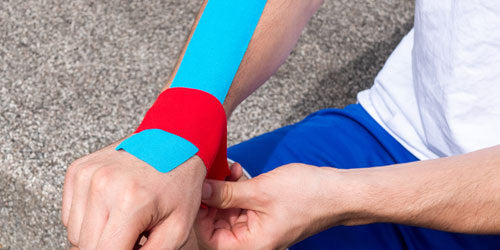
Wrist taping
To the taping instructions -

Ankle taping
To the taping instructions -

Shoulder taping
To the taping instructions -

Knee taping
To the taping instructions -
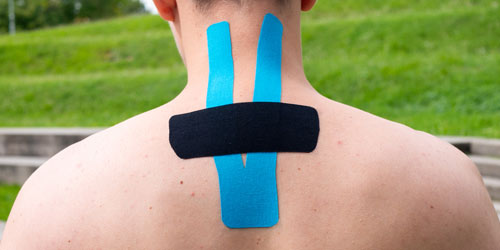
Neck taping
To the taping instructions -

Back taping
To the taping instructions -

Elbow taping
To the taping instructions
Frequently asked questions
FAQ Kinesiology Tape
What tips should I follow for using Kinesiology Tape?
- You can improve the adhesive properties of the kinesiological tape by thoroughly cleaning your skin before use and removing any fats
- It is helpful for the adhesion of the tape to shave the area to be taped before use
- Before taping, round off the edges with scissors so that the corners don't peel off so easily. You don't need to do this with pre-cut kinesiology tapes because the corners are already rounded
- After you have applied the tape, rub the tape on the elbow several times to activate the adhesive.
How do I remove kinesiology tape?
The tape can usually be removed painlessly after use. If you feel slight pain due to hair or other conditions, it is advisable to rub the tape with something fatty such as skin cream or oil.
When should Kinesiology Tape not be used?
The kinesiology tape must not be applied to open wounds that have not yet healed.
Even if you have a known allergy to acrylic, you should avoid using it.
Tape should also not be applied to existing skin irritations.
These points should not claim to be complete.
What does the color of the kinesiology tape mean?
The colors of the tape are said by some to have special properties that are based on kinesiological color theory. However, there is no medical evidence for this. The color can therefore be chosen according to the patient's personal preference. In the area of the face and neck, an inconspicuous shade, such as beige, can be used. If your application requires gluing in several layers, different colors are suitable for better differentiation.
Can I apply kinesiology tapes myself or do I need help?
Yes, kinesiological tape can also be applied at home, depending on the part of the body, a second person can be helpful.
However, you should have sufficient knowledge of the adhesive technique or be instructed by a doctor or therapist in order to achieve a positive result.
How long should you wear kinesiology tape?
That depends entirely on the intended application and part of the body, but the tapes can usually be worn for several days at a time
Can I shower or bathe with kinesiology tapes?
Yes, the axion kinesiology tapes are waterproof, so you can shower or swim even if you use them for several days
Are there any risks when using kinesiology tapes?
As a rule, no risks are to be expected if the tapes are used correctly. If you have an intolerance to the adhesive, skin irritation may occur. Before using for the first time, take a small strip of the tape and test it on an inconspicuous area. You should also avoid wrapping it too tightly so that it does not constrict the affected area
Can kinesiology tapes be used more than once?
Kinesiology tapes should be replaced after use, which can last several days
Is there scientific evidence for the effectiveness of kinesiology tape?
So far, despite a large number of positive application reports and widespread use, there has not been sufficient evidence of the effect through scientific studies
* The effect of kinesiology tape has not been sufficiently proven by clinical studies, despite predominantly positive experiences in practice. The effects and advantages of kinesiology tape listed here are based on years of experience from customers, athletes and experienced therapists.











